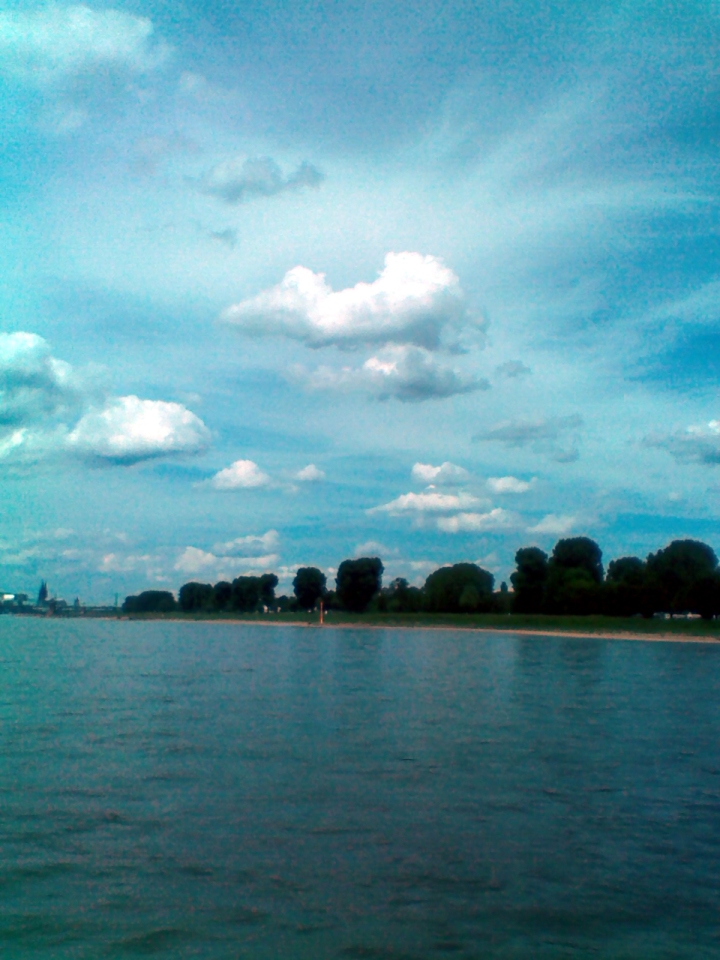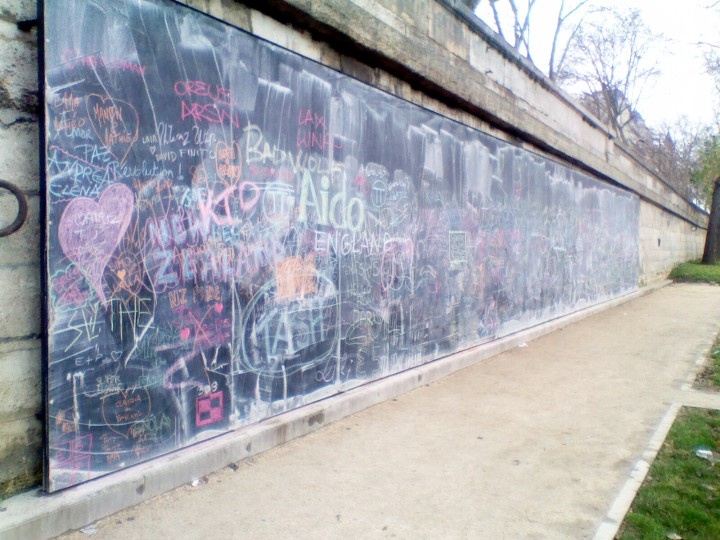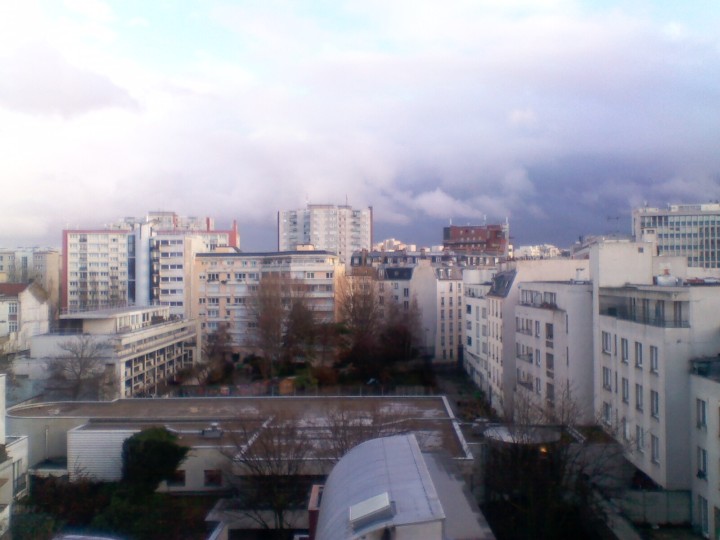 For me, studying linguistics in France is a marginally surreal experience.
For me, studying linguistics in France is a marginally surreal experience.
This isn’t to say that I’m finding university in France to be a problem. All my teachers seem to be excellent, the course content is interesting without being unpleasantly difficult, and everyone’s happy to make things a little easier, when necessary, for the fish-out-of-water Australian kid. It’s just that, even though studying at Paris III is like studying at UWA most of the time, there are some small but consistent differences that get a little jarring.
Best example of this so far: a few days ago I had my usual Wednesday-morning formal semantics lecture. There have been a few drawn-out debates in this class over a number of topics, mostly because truth-conditional logic doesn’t seem quite so logical at 9 am on a winter morning, and these have slowed down the progression of teaching moments. So last Wednesday, with a week-long ‘semaine de lecture’ (read: ‘study break’) ahead, the teacher asked us to remind her how many teaching weeks were left before the scheduled date for the mid-semester exam; and upon finding out that there was only one, she said ‘Fine, we’ll push it back another week’.
This might not seem strange to you, but damn, did it seem strange to me. I mean, this mid-sem (the French term is partiel) is worth a third of the whole unit, and at UWA, its positioning wouldn’t really be that flexible; rooms have to be booked well in advance and test papers have to be submitted by certain deadlines. Here, apparently, teachers can move these things as they see fit. This isn’t a bad thing (another teacher asked us what date we’d prefer for his unit’s partiel); it just seemed odd because I wasn’t expecting it.
(The change of date doesn’t thrill me, but for a reason that has nothing to do with differing university practices; it’s now on the same date as another assessment for a different unit. Alas.)

Another view from the apartment, this one at sunset.
My French language competence varies dramatically from day to day, but I can at least follow all my classes without problems. (Outside the classroom… well, the less said the better.) Usually this comes down to the simple fact that linguistics terminology in English is pretty Latinate and therefore tends to have exact French equivalents (if I hear about systèmes phonologiques being partiellement compatibles, I don’t need a dictionary to figure it out), and once I have that, I can guess decent chunks of the rest of the discussion from context. The net effect of this is that I slip into a French-language mode in the classroom. I even stop thinking in English some of the time. This just makes it more amusing when my teachers inject English words into their classes; I’ve encountered an impressive diversity of Franglais accents so far.
Anyway, I’ve finally finalised my enrolment for my semester here, and I’ve ended up with a (largely) surprisingly fun-looking timetable: six units, 12.5 hours of classes a week, and Mondays off (and only one class on Thursdays and Fridays). Apart from one in French-language-methodology, all of my units have turned out to be in linguistics: formal and logical semantics, linguistic typology, language contact, comparative linguistics of the Romance languages, historical and comparative linguistics. The last one is particularly interesting – I took a historical linguistics unit at UWA and signed up for another here to get a different perspective on the topic. And damn, did I get a different perspective: we’ve spent the last five weeks analysing Nepali verbs.
The pay-off for this mostly pleasant timetable is my Tuesdays; somehow, I ended up taking half my weekly classes on a single day, which runs from 9 am to 6 pm. I expect this wouldn’t be fun at the best of times, but in winter, this is the entire daylight period, and by the end of my second typology lecture I’m definitely flagging. How do I survive, not being a coffee-drinker? I turn to another popular comfort consumable: chocolate.
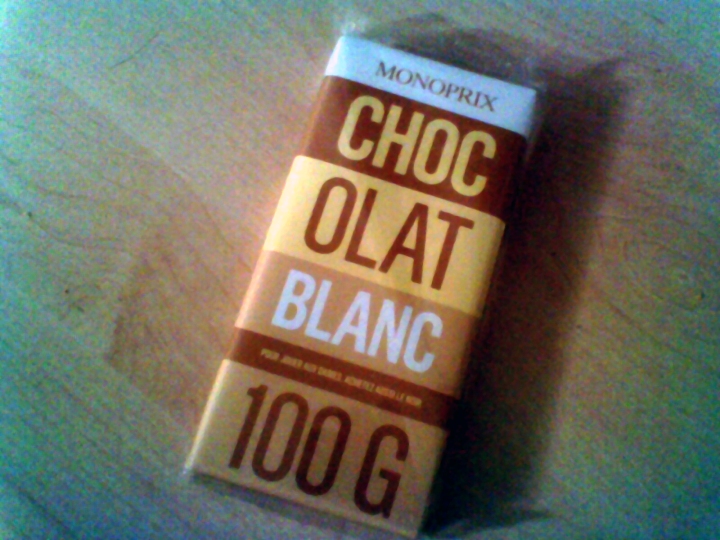
I go through two of these 100g bars a week. Don’t judge me.
The big surprise is that I’m really enjoying my semantics classes. I was kind of worried about these ones before I arrived, given that formal semantics isn’t an area of linguistics I’ve read much about at all; but so far it doesn’t seem crushingly difficult. Something about its strict, logical rationality really appeals to me. And I’ve been having a great time in my tutorial classes, especially when I spot answers that the native Francophones can’t see. (For example, one of our first classes was on ambiguity – ‘Tous les enfants ont vu une sorcière’ [‘All the children have seen a witch’] was an ambiguous sentence we were given. I found the ambiguous interpretation fairly easily, a small discovery which brightened my morning; and given that my semantics tutorial starts at 8.30 am, things that brighten my morning are appreciated.)
Meanwhile, my language contact teacher is boundlessly enthusiastic, my typology lecturers are thorough and give great examples, and I love my class in comparative linguistics of the Romance languages; it’s pretty small, which gives it a nice feel, and it’s delightfully broad-ranging and fascinating. (Plus it starts at 2 pm and I have no classes before it, meaning I can get up at midday if I want to.)
All in all, shaping up to be a cool semester.
Oh yeah! In other news, I made an amazing French onion soup last night. It was my second attempt while I’ve been here, and undoubtedly the more successful one.
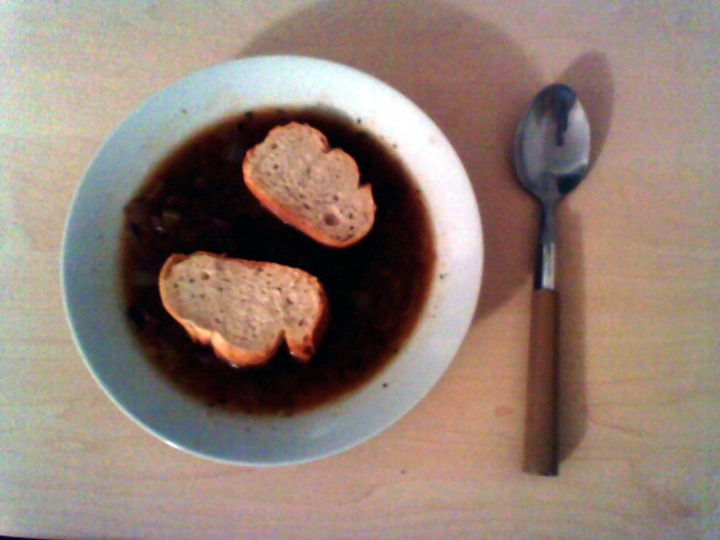
Why yes, it was even more delicious than it looks.
(And the ambiguity in ‘Tous les enfants ont vu une sorcière‘? You can interpret it either to mean that all the children have seen the same witch [i.e. ‘this is the set of children who saw the witch who was here last week’], or that all the children have, at some point, seen a witch [i.e. ‘this is the set of all students who have seen a witch in their lives’]. It’s a ‘distributive-collective’ ambiguity, centred on the determiner tous, ‘all’.)
 I spent three days in Cologne last week. This is why.
I spent three days in Cologne last week. This is why.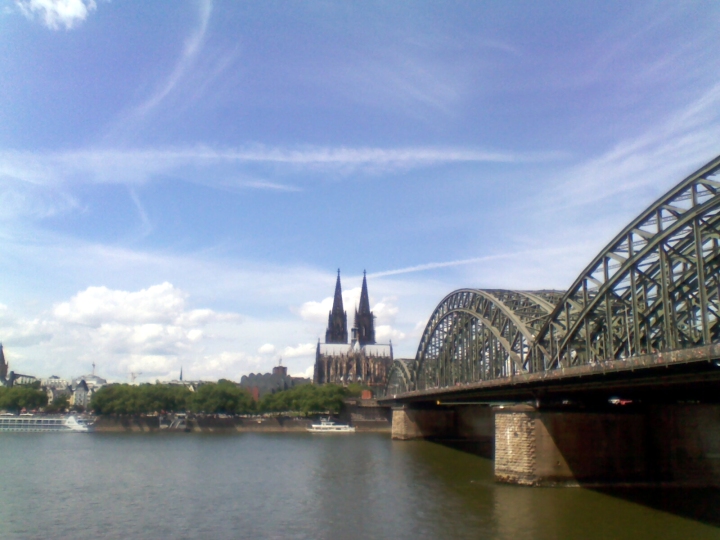 Other things done in Cologne: visited the Schokoladenmuseum on the banks of the Rhine (they had a chocolate fountain and gave out free samples), took a boat tour on that same river, climbed one of the towers of the Kölner Dom (over 500 steps!) and descended deep into its treasury to see Frankish burials goods and relics of the Magi. Time well spent.
Other things done in Cologne: visited the Schokoladenmuseum on the banks of the Rhine (they had a chocolate fountain and gave out free samples), took a boat tour on that same river, climbed one of the towers of the Kölner Dom (over 500 steps!) and descended deep into its treasury to see Frankish burials goods and relics of the Magi. Time well spent.